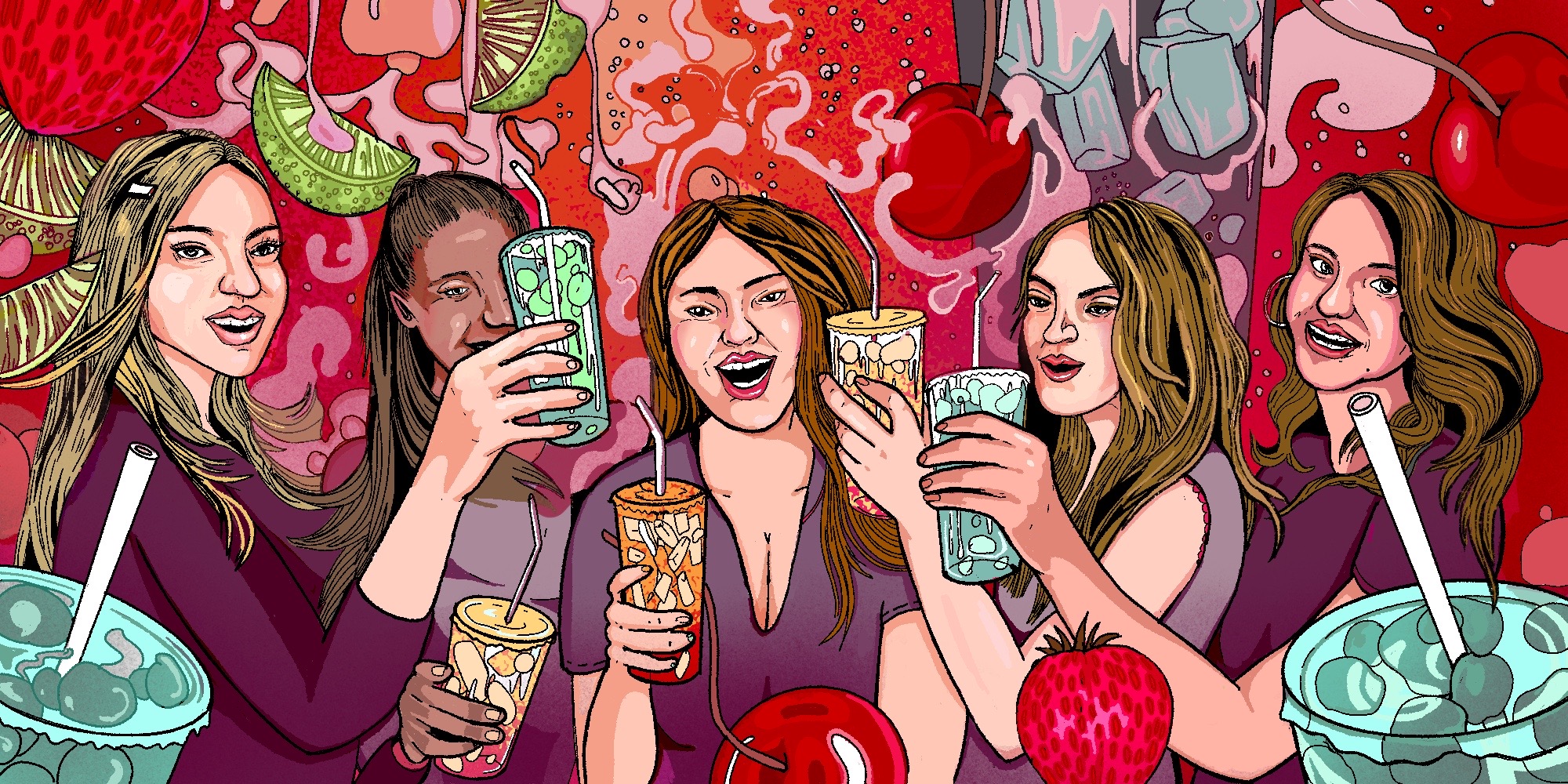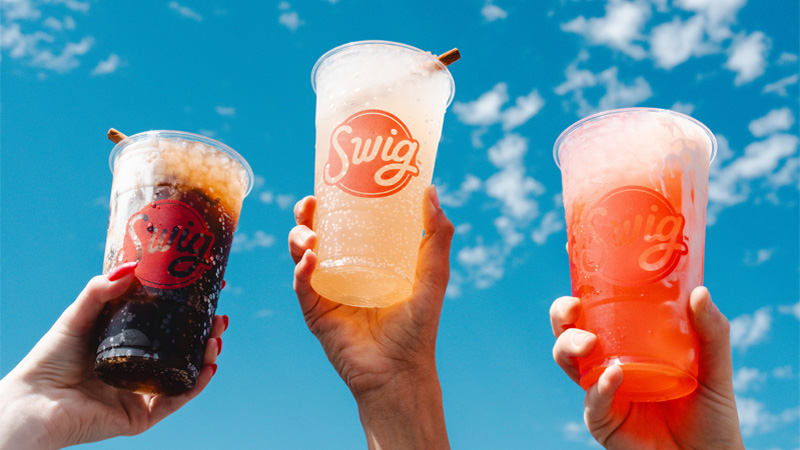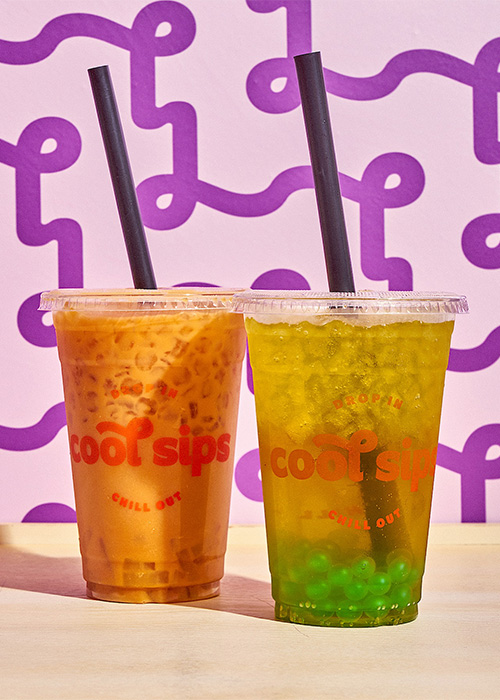
In Salt Lake City, where I live, you’ll find shot glasses and stickers in tourist shops with the sage warning: “Eat, drink, and be merry, for tomorrow you might be in Utah.” It’s a self-deprecating nod to the perception that our local food culture is nonexistent. But recently, Utah has snagged a curious spot on the U.S. culinary map. New Mexico has Hatch chiles, New York claims bagels, and Maine is all about the lobster rolls. Here? Well, we’ve got dirty soda.
The formula is simple: Fountain drinks like Mountain Dew, Coke, and Dr. Pepper are spiked with flavored syrups, fruit purées, and coconut cream or half-and-half. A TikTok darling in 2022, this Utah-born concoction has recently bubbled back into the national consciousness thanks to “The Secret Lives of Mormon Wives.” The Hulu series follows a gaggle of mom-influencers juggling family, faith, and a sex scandal — all while sipping gallons of dirty soda. And somewhere between the religious fetishization and pop culture fervor, this thoroughly Utahn “vice” has sparked a thriving business model.
The Dirty Soda Boom
The story starts with Swig, a drive-through shack that opened in 2010 in St. George, about 300 miles south of Salt Lake City, which sold ice cream, cookies, and dirty soda. Though creamy, bubbly drinks like Indian-Pakistani doodh soda, Korean Milkis, and floats have existed for centuries, the “original” dirty soda recipe was allegedly a mix of Diet Coke, coconut syrup, lime, and half-and-half. At the time, the drink filled a major cultural hole in a state where about 42 percent of residents identify as members of the Church of Jesus Christ of Latter-day Saints (LDS), which prohibited the consumption of alcohol, tea, and coffee. Swig gave “Mormons the opportunity to partake in their own version of mixology,” Dr. Brant Ellsworth, an associate professor of humanities at Central Penn College, writes in “This Is the Plate: Utah Food Traditions.”
For years, caffeinated drinks were considered a gray area by many Mormons. But when Mitt Romney was spotted drinking Diet Coke during his 2012 presidential campaign, the LDS church released a statement clarifying that caffeine wasn’t officially prohibited. (Tea, coffee, and alcohol are still very much off the table.) Since then, local-born soda shop chains like Sodalicious, FiiZ, Thirst, and Twisted Sugar have exploded across the region. And each is meeting pent-up demand, with a dizzying array of creative drink combinations — like Sodalicious’s Second Wife or its Eternal Companion — that often playfully wink at Mormon culture.
A Sweet Escape
Silly little drinks have always helped us humans break up the day. Coffee pulls us out of bed, tea offers a small escape from work, and happy hour marks adult playtime. For many Utahns who eschew such beverages, dirty sodas fill identical social roles.

“I’m not going to have a cocktail after work,” says Martin Earl, a 43-year-old chef based in Pleasant Grove, Utah, who was raised in the LDS church. “But maybe I’ll grab a soda to mark the end of the day.” His go-to? The El Doctoro from Sodalicious, which combines Dr. Pepper and horchata. Earl suspects that part of the appeal of soda shops among fellow members of the church comes from a desire to belong in the broader American culture.
“We’ve been called weird; we’ve been outsiders for a long time,” he says of people in the LDS faith. Dirty sodas “make us feel less different.”
These shops have also become popular with college students and young adults, acting as a bar or coffee shop alternative. “If my friends and I were going to ‘party,’ said in the biggest air quotes ever, we’d go get a dirty soda and hang out and play games,” says Emma Mero, a 31-year-old email marketer who lives in American Fork, Utah, and went to school at Brigham Young University in Rexburg, Idaho. Mero has left the church, but these days, she still grabs sodas to bring to friends’ houses or use as a mixer with alcohol. “I love a Diet Dr Pepper with coconut cream and a tropical fruit syrup,” she says.
The Sugar Effect
Dirty soda might emulate coffee and cocktails in form, but it lacks the bitter flavors I personally crave. On a recent trip to Swig, I ordered a Dr Pepper with lime, raspberry purée, and coconut cream. The effervescence felt heavy, the cream coated my mouth in a weird way, and there was nowhere near enough sour to make up for all that sweet. I found a better balance at a nearby FiiZ, where Sprite, passion fruit syrup, and plenty of fresh lemon and lime created a passable soda — though I still wanted a shot of tequila and a pinch of salt in the mix.
“Because I’m an adult and I have my own money and there’s a drive-through that sells Dr Pepper with horchata in it, obviously I’m going to go there.”
The cloying sweetness of dirty soda is by design. In Utah — where our most iconic homegrown delights include Jell-O, a mainstay at church potlucks; fry sauce, a combo of ketchup and mayonnaise; and cheesy funeral potatoes, a very extra take on gratin — it’s well known that our culinary preferences lean saccharine and mild. “We have a singular, front-leading flavor in our state’s palate and that is sugar,” says Lynne McNeill, a folklorist at Utah State University who edited “This Is the Plate.” “An appreciation for bitter, complicated flavors usually comes from beer, wine, and coffee — all of the things that the LDS church says no to.”
Where my own transition to adulthood was defined by bold morning cortados and nights spent playing Edward winey hands — I’m Australian, OK? — those of a huge population of Utah youths are marked by… more sugar.
“When I was growing up, soda certainly didn’t have the prevalence that it has now in this culture,” Earl tells me. “But because I’m an adult and I have my own money and there’s a drive-through that sells Dr Pepper with horchata in it, obviously I’m going to go there.”
Dirty Soda Goes National
Though consumption of sodas in the U.S. has been steadily declining over the past couple of decades, chains that center them seem to be bucking the trend. Fueled by celebrity fans like Olivia Rodrigo, reality TV casts, and the countless TikTokers making homespun riffs, soda shops are spreading across the country. Swig has plans to open 1,000 stores over the next seven years, focusing on the South and Midwest. Competitors like FiiZ and Sodalicious have hit around 60 and 25 locations, respectively. Even New York City now boasts a couple of dirty soda shops, called — mild shudder — Cool Sips.
“I think people are relying on food and drink to express their personalities in ways that seem quirky and interesting but skirt controversy.”
In much of the country, these chains are thriving because of their drive-through lanes, says Adam Chandler, author of “Drive-Thru Dreams: A Journey Through the Heart of America’s Fast-Food Kingdom.” Starbucks, Sonic, the newly opened CosMc’s, Dutch Bros, 7 Brew, and Scooter’s have all been able to hit astronomical growth goals due to our long-standing love affair with sipping in the car — and it’s no different for dirty soda-specific shops.
“Drive-throughs are beneficial to the bottom line of these companies because they don’t have to devote so much space to physical dining,” says Chandler, “and it means they can open up in other places.”

Dirty soda also satisfies a more existential American craving. With an endless variety of flavors to mix and match, these highly customizable drinks offer a way to showcase individuality in an era when sharing opinions often leads to online backlash. “Politics right now is very dramatic and very polarizing,” says Chandler. “And so I think people are relying on food and drink to express their personalities in ways that seem quirky and interesting but skirt controversy.”
While the sober-curious movement might be helping dirty soda, wellness fatigue could equally be contributing to the obsession, says McNeill, adding that Americans seem to be growing weary of a constant barrage of dietary advice. “After a while, you’re just like, ‘Screw it,’” she says. This YOLO approach is echoed in “The Secret Lives of Mormon Wives.”
“Six out of seven days of the week, I’m having at least one 44-ounce soda,” cast member Layla Taylor said in an episode where a group of the athleisure-clad moms meet up at a Swig location. “I’m only going to live to, like, 50. But it makes me happy.”
For some locals who love dirty soda, though, the appeal is really not that deep. In West Jordan, Utah, Kiersten, a 17-year-old high school student whose surname we’re withholding for privacy, orders a Ninja Turtle from FiiZ most days. It’s Mountain Dew spiked with both blackberry and blue raspberry syrups. When I asked her why she was so into the drink, her answer was refreshingly simple: “‘Cause it tastes good.”
The article How Dirty Soda Bubbled Over the ‘Mormon Corridor’ appeared first on VinePair.







